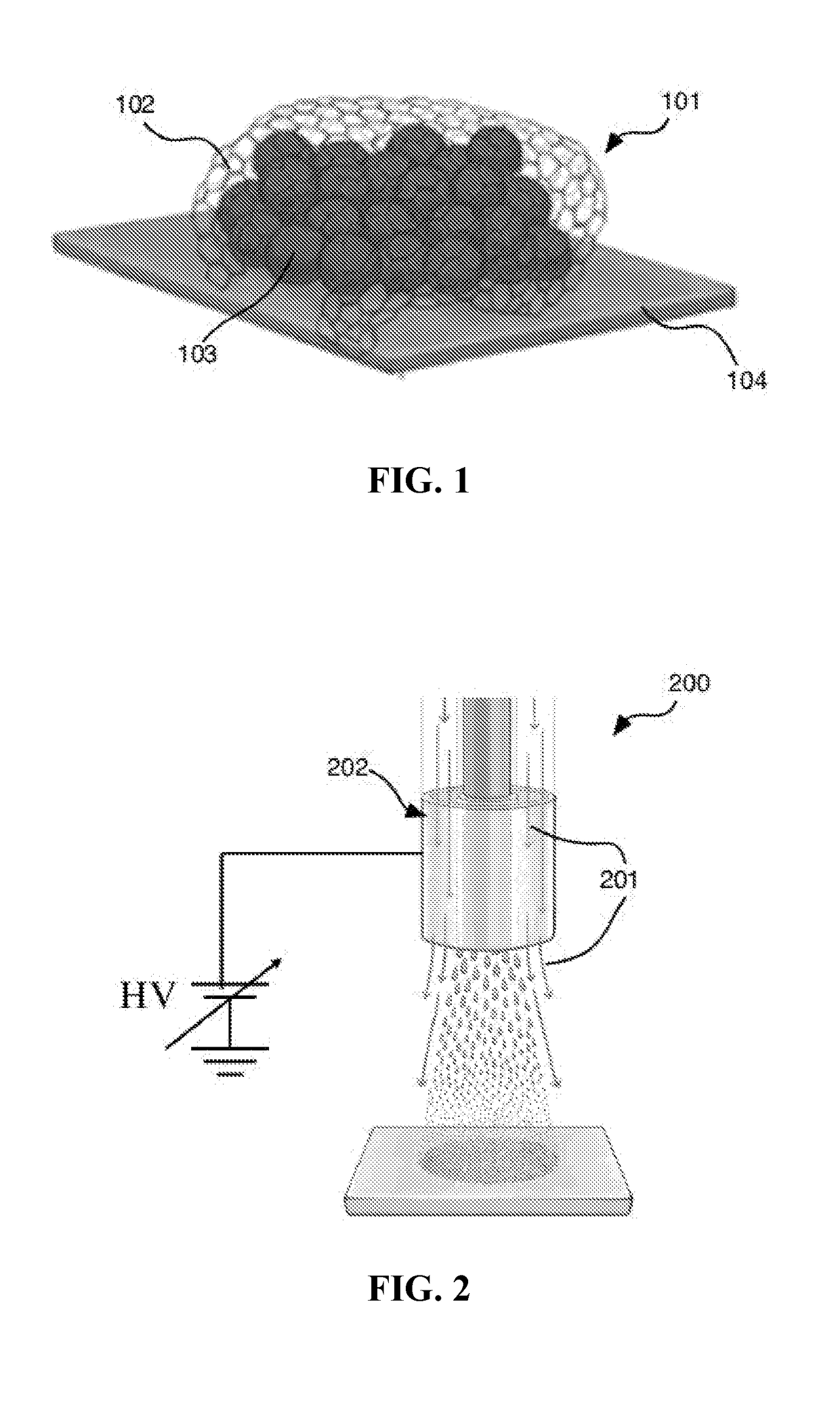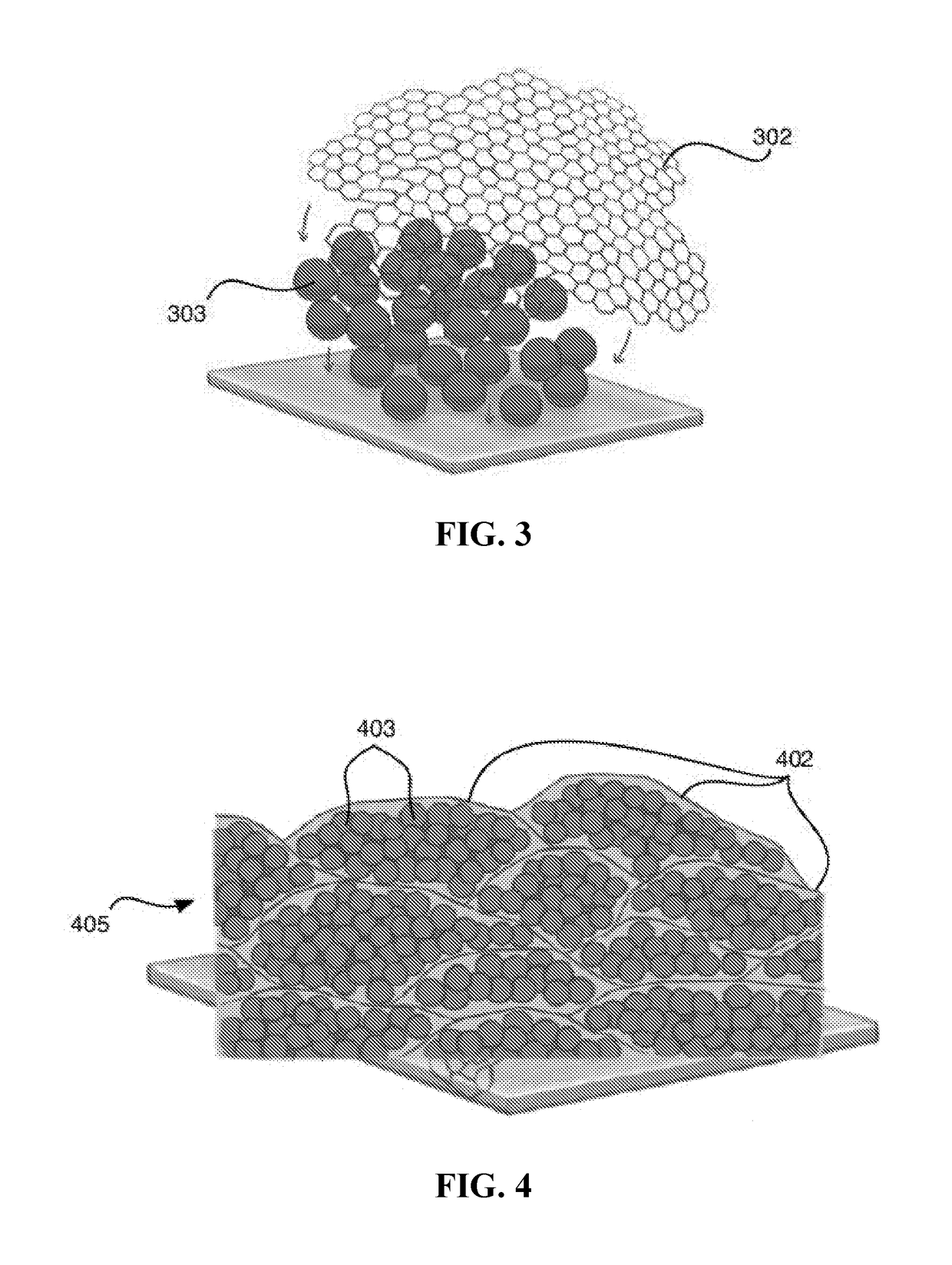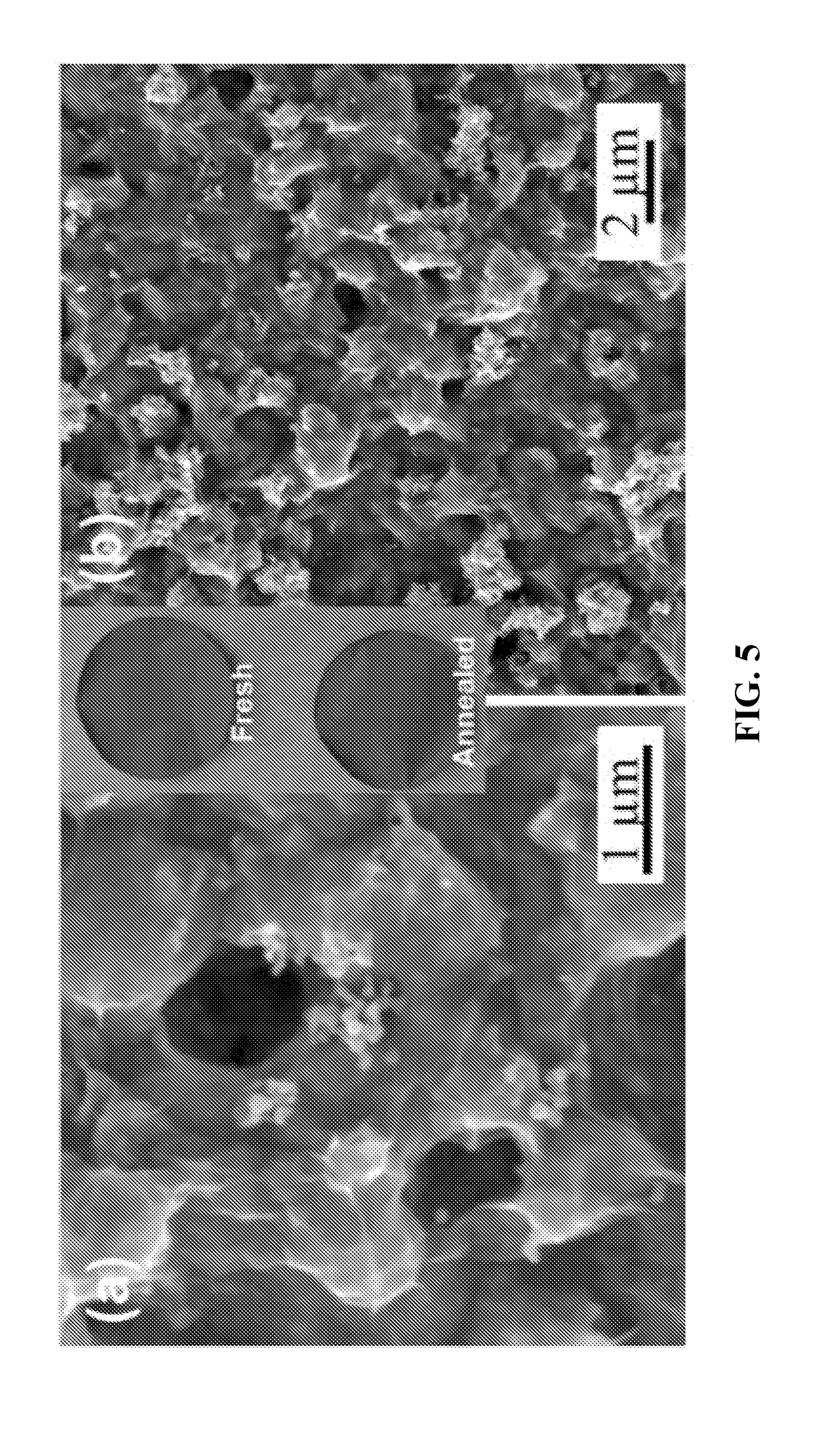High performance electrodes, materials, and precursors thereof
- Summary
- Abstract
- Description
- Claims
- Application Information
AI Technical Summary
Benefits of technology
Problems solved by technology
Method used
Image
Examples
example 1
[0154]A fluid stock is prepared by combining silicon nanoparticles, graphene oxide, and water, at a weight ratio of Si NP (7.5%):GO (2.5%):water (90%). The fluid stock is then electrosprayed by injecting the fluid stock into a gas stream, such as using a gas-controlled electrospray nozzle described herein, in the direction of a substrate (e.g., a metal current collector) at a flowrate of 0.2 mL / min under 2 kV / cm. A deposition (electrode) with a mass loading of about 1 to 2 mg / cm2 is collected on the substrate, without the need for adding a binder, or the need for further processing.
[0155]Other electrode / current collector systems are also prepared using silicon nanoparticles and graphene oxide, by blending with Super P (Timcal) and poly(acrylic acid) (PAA, MW=3,000,000) in a weight ratio of 80 (active material):10 (super P):10 PAA in N-methyl-2-pyrrolidinone (NMP) in order to make a slurry. In one example, the slurry is drop cast onto a current collector; in another example, the slur...
example 2
[0159]Full cells are prepared using a mixed lithium colbalt oxide (LCO) cathode and the anode of Example 1. FIG. 9 illustrates full cell data therefor at a charge / discharge rate of 0.1 C. As is illustrated, initial specific capacity of the anode is about 1600 mAh / g, with good cycling retention.
example 3
[0160]Electrodes are prepared according to the electrospray techniques described in Example 1. The electrodes are then thermally treated at a temperature of about 200° C. (e.g., to at least partially reduce and / or remove defects of the graphene oxide thereof, thereby converting the graphene oxide to what is referred to herein as reduced graphene oxide). FIG. 5 shows images of the electrosprayed electrode at various magnifications, as well as images of non-thermally treated electrode and thermally treated electrode. FIG. 10 illustrates Coulombic efficiency of various loadings for both thermally treated and non-thermally treated electrodes. As is illustrated, for both loadings, the thermally treated samples (referred to in the figure as “RGO”) demonstrate improved Coulombic efficiency, especially at the first cycle, relative to the non-thermally treated analogs. FIG. 12 illustrates a CV curve for both thermally and non-thermally treated electrodes.
PUM
 Login to View More
Login to View More Abstract
Description
Claims
Application Information
 Login to View More
Login to View More - R&D
- Intellectual Property
- Life Sciences
- Materials
- Tech Scout
- Unparalleled Data Quality
- Higher Quality Content
- 60% Fewer Hallucinations
Browse by: Latest US Patents, China's latest patents, Technical Efficacy Thesaurus, Application Domain, Technology Topic, Popular Technical Reports.
© 2025 PatSnap. All rights reserved.Legal|Privacy policy|Modern Slavery Act Transparency Statement|Sitemap|About US| Contact US: help@patsnap.com



